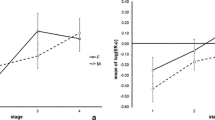Abstract
Three related orphan nuclear receptors that are expressed in the brain, NGFI-B, Nurr1, and NOR-1, were studied to compare their function as transcriptional activators. NGFI-B was able to activate (in the absence of added hormone) in CV1 cells both an NGFI-B-responsive luciferase reporter gene (containing eight copies of a response element for NGFI-B upstream of a basal prolactin promoter driving the luciferase gene, NBRE8-LUC), a similar thyroid hormone-receptor-responsive reporter gene (TRE3-LUC), and a reporter gene with an authentic promoter from aXenopus vitellogenin gene containing two binding sites for the estrogen receptor (vit-LUC). NGFI-B activated NBRE8-LUC and TRE3-LUC (but not the vit-LUC) with an amino-terminal activation domain. Nurr1 was less promiscuous as a transcriptional activator, activating the NBRE8-LUC better than NGFI-B, but less than NGFI-B at the other reporter genes. NOR-1 activated only the NBRE8-LUC reporter gene. These results indicate that closely related nuclear receptors may differentiate between response elements or promoters and that different activation mechanisms exist depending on the promoter. This may contribute to regulation of specificity of target gene expression in the brain.
Similar content being viewed by others
Abbreviations
- ERE:
-
estrogen receptor response element
- GRE:
-
glucocorticoid receptor response element
- NGFI-B:
-
nerve growth factor-induced clone B
- NBRE:
-
NGFI-B response element
- NOR-1:
-
neuron-derived orphan receptor
- Nurr1:
-
Nur-related factor 1
- TRE:
-
thyroid hormone receptor response element
References
Beato M. (1989) Gene regulation by steroid hormones.Cell 56, 335–344.
Ciani E. and Paulsen R. E. (1995) Activation of a reporter gene responsive to NGFI-B in cultured neurons and astrocytes.J. Mol. Neurosci. 6, 131–139.
De Wet J. R., Wood K. V., De Luca M., Helinski D. R., and Subramani S. (1987) Firefly luciferase gene: structure and expression in mammalian cells.Mol. Cell. Biol. 7, 725–737.
Evans R. M. (1988) The steroid and thyroid hormone receptor superfamily.Science 67, 889–895.
Freedman L. P. and Luisi B. F. (1993) On the mechanism of DNA binding by nuclear hormone receptors: a structural and functional perspective.J. Cell. Biochem. 51, 140–150.
Hazel T. G., Nathans D., and Lau L. F. (1988) A gene inducible by serum growth factors encodes a member of the steroid and thyroid hormone receptor superfamily.Proc. Natl. Acad. Sci. USA 85, 8444–8448.
Hazel T. G., Misra R., Davis I. J., Greenberg M. E., and Lau L. F. (1991) Nur 77 is differentially modified in PC12 cells upon membrane depolarization and growth factor treatment.Mol. Cell. Biol. 11, 3239–3246.
Kumar V., Green S., Stack G., Berry M., Jin J.-R., and Chambon P. (1987) Functional domains of the human estrogen receptor.Cell 51, 941–951.
Law S. W., Conneely O. M., DeMayo F. J., and O’Malley B. W. (1992) Identification of a new brain-specific transcription factor, Nurr1.Mol. Endocrinol. 6, 2129–2135.
Lee S. L., Wesselschmidt R. L., Linette G. P., Kanagawa O., Russell J. H., and Milbrandt J. (1995) Unimpaired thymic and peripheral T cell death in mice lacking the nuclear receptor NGFI-B (Nur77).Science 269, 532–535.
Liu Z.-G., Smith S. W., McLaughlin K. A., Schwartz L. M., and Osborne B. A. (1994) Apoptotic signals delivered through the T-cell receptor of a T-cell hybrid require the immediate-early genenur77.Nature 367, 281–284.
Milbrandt J. (1988) Nerve growth factor induces a gene homologous to the glucocorticoid receptor gene.Neuron 1, 183–188.
Mitchell P. J. and Tjian R. (1989) Transcriptional regulation in mammalian cells by sequence-specific DNA binding proteins.Science 245, 371–378.
Ohkura N., Hijikuro M., Yamamoto A., and Miki K. (1994) Molecular cloning of a novel thyroid/steroid receptor superfamily gene from cultured rat neuronal cells.Biochem. Biophys. Res. Commun. 205, 1959–1965.
Paulsen R. E., Weaver C. A., Fahrner T. J., and Milbrandt J. (1992) Domains regulating transcriptional activity of the inducible orphan receptor NGFI-B.J. Biol. Chem. 267, 16,491–16,496.
Sadowski I. and Ptashne M. (1989) A vector for expressing GAL-4(1–147) fusions in mammalian cells.Nucleic Acids Res. 17, 7539.
Sanger F., Nicklen S., and Coulson A. R. (1977) DNA sequencing with chain terminating inhibitors.Proc. Natl. Acad. Sci. USA 74, 5463–5467.
Seed B. and Shean J. Y. (1988) A simple phase-extraction assay for chloramphenicol acyltransferase activity.Gene 69, 271–277.
Watson M. A. and Milbrandt J. (1989) The NGFI-B gene, a transcriptionally inducible member of the steroid receptor gene superfamily: genomic structure and expression in rat brain after seizure induction.Mol. Cell. Biol. 9, 4213–4219.
Watson M. A. and Milbrandt J. (1990) Expression of the nerve growth factor-regulated NGFI-A and NGFI-B genes in the developing rat.Development 110, 173–183.
Wilson T. E., Fahrner T. J., Johnston M., and Milbrandt J. (1991) Identification of the DNA binding site for NGFI-B by genetic selection in yeast.Science 252, 1296–1300.
Wilson T. E., Paulsen R. E., Padgett K. A., and Milbrandt J. (1992) Participation of non-zinc finger residues in DNA binding by two nuclear orphan receptors.Science 256, 107–110.
Winoto A. (1994) Molecular characterization of the Nur77 orphan steroid receptor in apoptosis.Int. Arch. Allergy Immunol. 105, 344–346.
Woronicz J. D., Calnan B., Ngo V., and Winoto A. (1994) Requirement for the orphan steroid receptor Nur77 in apoptosis of T-cell hybridomas.Nature 367, 277–281.
Author information
Authors and Affiliations
Rights and permissions
About this article
Cite this article
Paulsen, R.E., Granås, K., Johnsen, H. et al. Three related brain nuclear receptors, NGFI-B, Nurr1, and NOR-1, as transcriptional activators. J Mol Neurosci 6, 249–255 (1995). https://doi.org/10.1007/BF02736784
Received:
Accepted:
Issue Date:
DOI: https://doi.org/10.1007/BF02736784




